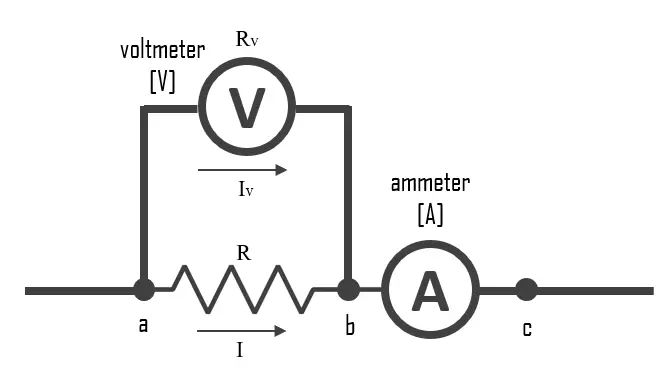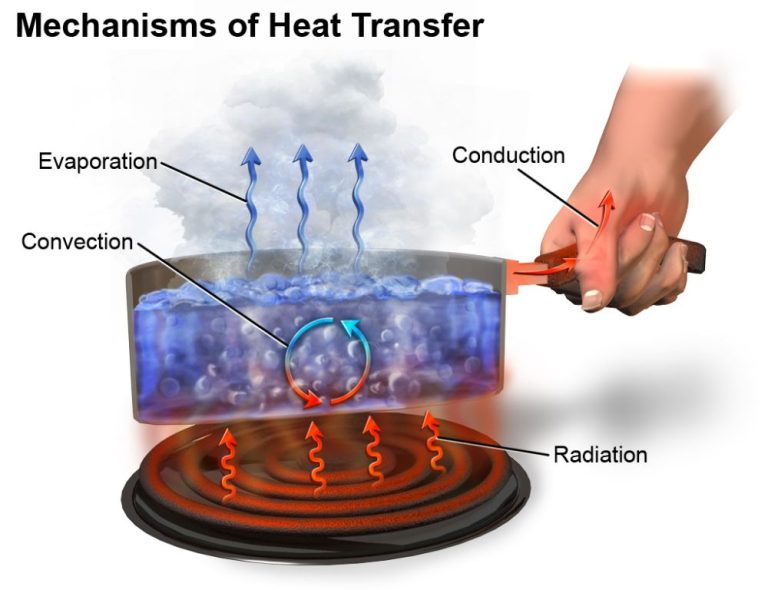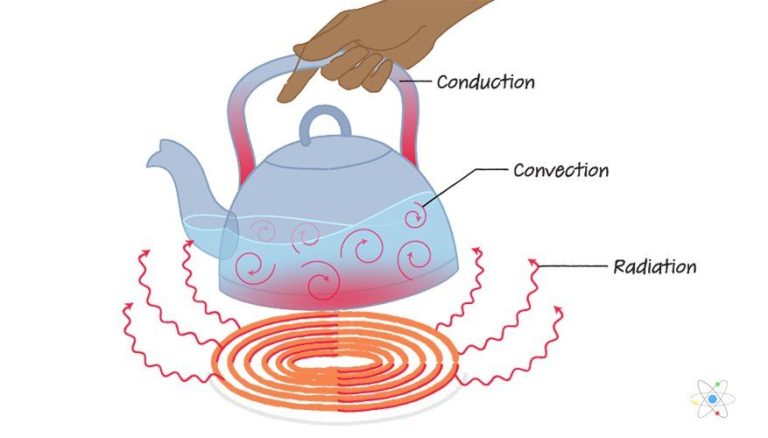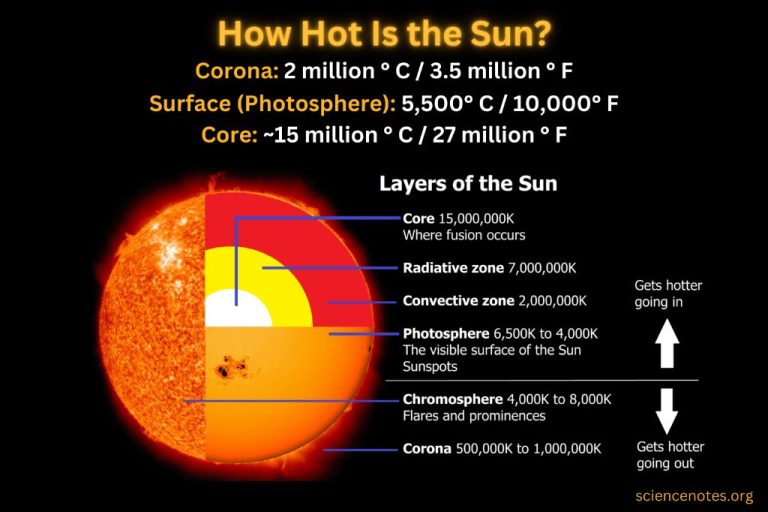Where Does Heat Transfer From?
Heat transfer refers to the transfer of thermal energy from one object or system to another. When two objects or systems with different temperatures come in contact with each other, the hotter object will transfer thermal energy to the cooler one until they reach thermal equilibrium. This process underlies many essential natural phenomena and technologies that impact our everyday lives.
There are three main mechanisms of heat transfer: conduction, convection, and radiation. Each method involves the transfer of energy in different ways and across different mediums. Understanding heat transfer is key to controlling and optimizing thermal processes for human benefit in areas like engineering, chemistry, climatology, and more.
In this article, we will provide an in-depth look at the principles of heat transfer, its mechanisms and applications, and cutting-edge research in thermal sciences.
Conduction
Conduction is one of the three main ways that heat can be transferred from one object or system to another. It occurs when two objects that are in direct physical contact transfer heat between each other. The warmer object passes kinetic energy in the form of heat to the cooler object until they reach thermal equilibrium.
Conduction requires direct contact between materials and only occurs in solids. This is because the atoms and molecules in solids are closer together, allowing for heat energy to be easily transferred between them through vibrations or free electron collisions. Metals tend to be good conductors of heat because they contain many free electrons that can transport thermal energy.
The rate of conductive heat transfer depends on the temperature difference between the objects, their shapes and sizes, and the conductive properties of the materials involved. Materials like metals and stone transfer heat rapidly through conduction, while insulators like wood or Styrofoam conduct heat very slowly.
Everyday examples of conductive heat transfer include a spoon heating up when placed in hot soup. The heat from the soup is conducted directly through the metal spoon to increase its temperature. Another example is a cast iron skillet heating up on a stove – the heat from the stove burner is conducted through the cast iron until the whole skillet gets hot.
Convection
Convection is a heat transfer mode that involves the motion of fluids. This fluid motion can be natural due to buoyancy-related forces, like in ocean currents and air circulation, or forced, like in heating and cooling systems. In convection, heat is transferred through the actual movement of heated fluid from one place to another, bringing its thermal energy along with it.
Convection occurs in both liquids and gases. For example, when water is heated on a stove, the warmer water at the bottom rises to the top as it expands. This creates a current that transfers heat up through the liquid. The same process happens in air, as hotter air rises due to being less dense than cooler air. This is why hot air balloons are able to float upward.
Some examples of convection include steam rising from a pot of boiling water, airflow from a fan or hairdryer, ocean currents circulating around the globe, and the churning motions of magma in the Earth’s mantle. Convection allows heat to be constantly mixed and distributed in fluids, enabling more uniform heating or cooling. It plays a major role in global weather patterns as well as many engineering systems.
Radiation
Radiation is the transfer of heat through electromagnetic waves and does not require direct contact between the heat source and the receiving object. Unlike conduction and convection, radiation can transfer heat across vacuums. All objects with a temperature above absolute zero emit thermal radiation, which is also called infrared radiation. The hotter the object, the more infrared radiation it emits.
The sun is a prime example of radiative heat transfer. The core of the sun is over 27 million degrees Fahrenheit. It emits enormous amounts of infrared radiation that travels the 93 million miles to Earth. When these infrared waves strike the atmosphere and surface of our planet, they transfer heat. Greenhouse gases like carbon dioxide and methane are able to absorb infrared radiation, which enables the atmosphere to retain some of this heat from the sun and warm the planet.
Common examples of radiative heat transfer are the heat that reaches us from a fireplace, wooden stove, or electric heater. Nighttime cooling is another example; after sunset objects radiate heat into space because space has a temperature of nearly absolute zero. Radiation does not require any medium to transfer heat, which makes it the only method of heat transfer in a vacuum. This principle is key to understanding how the Earth both absorbs and loses heat in the vacuum of space.
Heat Transfer in Nature
Heat transfer occurs constantly in the natural world through conduction, convection, and radiation. Here are some examples of heat transfer in weather, geology, and biology:
Weather
The sun’s radiation heats the Earth’s surface, which in turn warms the air above it. This heated air is less dense and rises upward in the atmosphere, creating convection currents. These convection currents cause wind and ocean currents, transferring heat around the planet.
Evaporation and condensation of water also causes heat transfer in weather systems. When water evaporates, it requires heat energy to change from liquid to gas form. This cools the environment. When water vapor condenses back into liquid form in clouds, it releases heat energy, warming the surrounding air.
Geology
Deep inside the Earth, radioactive decay and friction generate tremendous heat. This heat is conducted through the various layers of rock and mantle. Convection currents in the mantle also transfer heat upward towards the Earth’s surface.
Volcanoes allow hot magma to reach the Earth’s surface through conduction. The erupting lava then releases heat into the surroundings through radiation.
Biology
Animals and humans use various heat transfer mechanisms to regulate body temperature. Sweating coupled with evaporation helps cool the body through convection. Shivering generates heat through muscle contractions. Capillaries can expand to radiate more heat or contract to reduce heat loss.
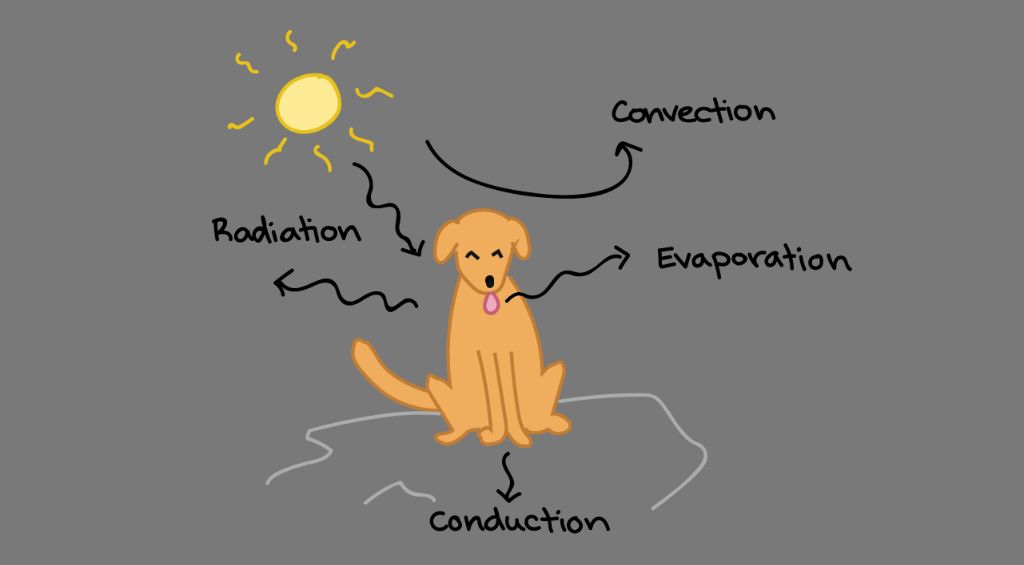
Plants also rely on heat transfer. Evaporation from leaves cools them down. Heat radiated from the ground warms plants. The process of transpiration pulls water through the roots and stem like a convection current.
Heat Transfer in Technology
Heat transfer plays a critical role in many modern technologies and machines. Understanding and controlling heat flow allows engineers to optimize system efficiency and performance.
One key application is in internal combustion engines. The burning of fuel results in very high temperatures inside the cylinder. Engine designers use coolant systems and oil lubrication to manage heat transfer from the combustion chamber to other engine components. Effective cooling prevents engine overheating while also allowing engine parts to reach optimal operating temperatures.
Heating, ventilation and air conditioning (HVAC) systems rely on heat transfer principles. Heat exchangers transfer thermal energy between air flows to heat or cool a space. Fans and ductwork direct airflow. Thermostats measure temperatures to control heating and cooling equipment. HVAC engineers balance heat transfer rates to maintain indoor comfort.
Cooking appliances like stoves, ovens and microwaves all depend on heat transfer. Burners and heating elements produce heat which transfers into pots and food items. Microwaves use radiation to deposit energy directly into food. Convection ovens and air fryers use hot air to transfer heat into food via convection. Engineers optimize heat transfer rates and use insulation to maximize cooking efficiency.
Methods of Heat Transfer Control
There are various methods to control heat transfer in order to make systems more energy efficient. Some key methods include:
Insulation
Insulation is used to reduce heat transfer between objects by providing a barrier between the heat source and the surroundings. Common insulation materials include fiberglass, plastic foams, wool, wood, and Styrofoam. Insulation slows down all modes of heat transfer – conduction, convection, and radiation. Properly insulating systems like buildings, pipes, and ducts can reduce energy usage for heating and cooling.
Reflectors
Reflectors are surfaces used to reflect radiation, usually infrared radiation or heat. Reflective surfaces like aluminum foil, metal coatings, and mirrored glass can be used to reflect radiant heat, reducing heat transfer between objects. Radiation reflectors are commonly placed between radiators and walls or ceilings to prevent heat loss.
Fins
Fins are surfaces that extend from an object to increase heat transfer with the surroundings. They work by increasing the surface area available for convection and radiation. Fins are commonly used on engine blocks, heat sinks, radiators, and more to help dissipate heat faster. Strategically designed fins can significantly improve passive cooling abilities.
Importance and Applications
Heat transfer is a fundamental process that is critical to many aspects of everyday life. Understanding how thermal energy moves is key to designing and controlling systems ranging from refrigerator cooling to rocket engine thrust. Heat transfer principles enable technologies that provide vital services like power generation, climate control, transportation, computing, and more.
Several industrial and commercial systems depend on effective heat transfer. Power plants, for example, rely on boilers transferring heat to water to produce steam that spins turbines and generates electricity. Without that process, modern society’s demand for abundant power could not be met. Refrigerators and air conditioners also leverage heat transfer physics, absorbing heat from inside an insulated space and releasing it outdoors through fluid compression and expansion.
Transportation presents a variety of heat transfer challenges as well. Internal combustion engines produce massive amounts of waste heat that must be dissipated to avoid overheating. Aerospace systems deal with extreme thermal environments, requiring careful thermal management for spacecraft and flight equipment. Even electric vehicles need battery cooling systems to maintain optimal operating temperatures.
At smaller scales, microelectronics play a critical role in technology. The performance of computer chips depends on how effectively heat can be channeled away from delicate components. This thermal management allows for increased computing speeds and capabilities supporting the digital economy.
Accurately modeling heat transfer is also vital for predicting weather patterns, informing climate models, and monitoring global systems. Convection currents transport thermal energy around the world, influencing seasons, precipitation, and more. A deep understanding of heat movement even allows tracking energy balances that indicate climate change.
In essence, heat transfer reaches into virtually every aspect of modern life. Mastering how thermal energy moves enables transformative technologies while also furthering science’s understanding of the world. Any complete description of physics or the natural world is incomplete without a thorough grounding in heat transfer theory and applications.
Current Research
Researchers are actively pursuing new methods and technologies to improve our understanding and control of heat transfer. Some key areas of current research include:
Nanoscale heat transfer
Studying heat transfer at the nanoscale offers insights into manipulating heat at the atomic level. Researchers are exploring applications of nanoscale heat transfer in areas like microelectronics cooling and thermoelectric devices.
Phase change materials
New phase change materials (PCMs) that store and release heat based on melting and solidification are enabling advances in thermal energy storage and temperature regulation.
Thermal metamaterials
Metamaterials engineered to control radiation and conduction can manipulate heat in ways not observed in natural materials. Potential applications include invisibility cloaks, radiative cooling, and hyperlenses.
Computational heat transfer
Powerful simulations and modeling tools provide unprecedented capabilities to analyze complex heat transfer processes for research and industrial applications.
As research advances, we can expect new thermal materials, devices, and techniques that will allow us to better understand, control, and utilize heat transfer processes.
Conclusion
In summary, heat energy is transferred in three main ways: conduction, convection, and radiation. Conduction is the transfer of heat between objects in direct contact with each other, like a pot on the stove. Convection is the movement of heat through fluids, like hot air rising. Radiation is the emission of electromagnetic waves from all objects, which can transfer heat without direct contact, like the warmth from the sun.
Understanding heat transfer allows us to control temperatures for our comfort and harness heat efficiently for power generation. Ongoing research explores how to optimize heat transfer for applications like electronics cooling, home insulation, and even spacecraft design. While heat transfer can sometimes be seen as problematic, like overheating of engines, the field offers many opportunities to manage heat beneficially.
In conclusion, heat transfer is a complex natural process with principles of conduction, convection and radiation. Mastering these concepts allows us to innovate technologies, control our environments, and gain insight into the Universe.

